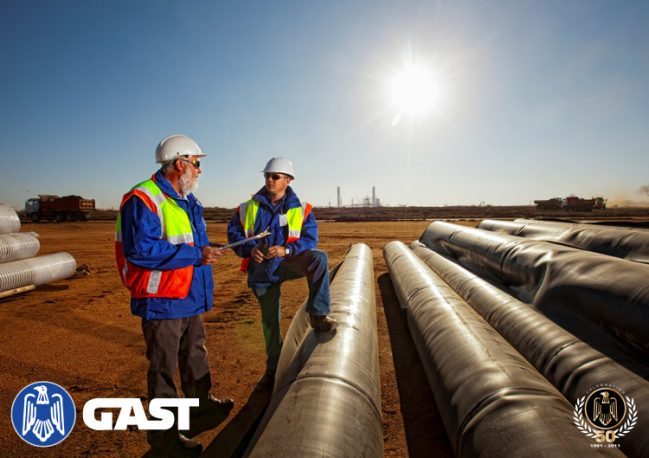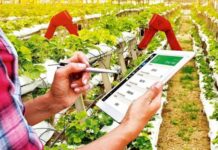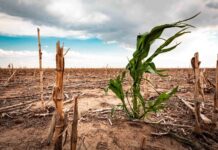“The current water crisis in the Western Cape has highlighted serious problems with South Africa’s approach to water management and finding viable solutions,” says Dr Kevin Gast, Principal Engineer of construction & civil engineering, waterproofing and geosynthetics company, Thusanang Gast (Pty) Ltd
He says in 2001 the province experienced its worst drought in a hundred years. “At the time, plans, programmes and protocols were put into place and budgeted for to augment the potable water supply, specifically to the city of Cape Town. Good rains followed, and the money was reallocated to other politically expedient projects. This has resulted in an unexpected challenge from a technological and engineering perspective.”
Current published mathematical models on climatic change indicate that the Western Cape could lose up to 40% of its winter rainfall and specific areas of Limpopo up to 20% in years to come.
The climate change models also indicate that a significant shift in the Southern African rainfall pattern will occur, resulting in the Western geographical areas below the sub-tropics to be dryer by up to 8% by 2080, while the Eastern geographical areas below the sub-tropics will experience a slight increase in rainfall.
Gast says the current drought and future rainfall outlook has significant implications for farmers. “Crop yields are expected to be reduced by about 50% and aquaculture by an estimated 20% in the 2018 season. This, in turn, will affect food security, leading to an increase in the occurrence and intensity of famine in Sub-Saharan Africa. In a nutshell, we can expect worsening droughts and increased flooding in different geographical regions of Southern Africa.”
In his budget speech, finance minister, Malusi Gigaba, committed a provisional allocation of R6 billion in 2018/2019 for drought relief and to augment public infrastructure investment.
He also raised concerns about the potential job losses for vulnerable farming communities as a result of the drought, noting that government is exploring the option of partially mitigating losses by temporarily increasing intake into the Working for Water programme.
He added that the allocation for drought response funds for water infrastructure projects and Expanded Public Works Programme (EPWP) will be made in the Adjustment Budget. To provide short term assistance, this budget includes disaster relief grants for provinces and municipalities worth R473 million in 2018/19.
Gast says it is estimated that R16.6 billion is required to alleviate the drought in the Western Cape. “Of this, only R639 million has currently been made available. This is an untenable situation and government, on a national and provincial level, needs to sharpen its drought relief tool box, including financial and other mechanical methodologies.
Speaking about possible solutions to the crisis, Gast says the estimated water loss from leaking pipes, valves and seals for South Africa is around 37% (Cape Town about 120 million litres per day). “The first port of call is to plug as many holes in the system as possible as this loss is water that has ready been prepared for human consumption.”
He says many countries run purely on desalination. “The current water production cost in South Africa is about R6.90 per kilolitre (kl), while the cost of desalinated water is approximately R16.00 per kilolitre (kl). It is never too late to implement a properly engineered desalination solution, but this should not be done in haste. While it may be tempting to choose a cheaper and more expedient option in the short-term, the country will suffer the consequences of an inadequate solution in the long term. Obviously, the cost of desalinisation will come down in direct proportion to the loss of water from water reticulation systems currently used.”
He says that some additional alternatives include the construction of deeper dams with lower evaporation coefficients, provided there is water available for capture. “These dams are, however, extremely expensive. In addition, the water needs to be reticulated to the end user, which is an additional cost. The construction of dams and canals using high density polyethylene does reduce the cost dramatically.”
To avoid a water crisis of the magnitude in the Western Cape, Gast suggests South Africa look to its past. “Previously, consulting civil engineers were allocated a geographical area of responsibility. This meant that the data was always available at the specified engineering practice’s fingertips, guaranteeing succession in design and implementation. This occurred along a pre-planned methodology integrated with a cash flow budget. Political intervention unfortunately usurped this internationally recognised practice and the repercussions are now highly tangible,” he says.
On climate change, Gast says the acidification of South Africa’s rivers, coupled with an increase in ambient temperature, is of great concern. We have seen a 1.4°C increase in temperatures in the country’s interior over the past century, while the coastal and tropical regions have only increased by 0.2 °C. The increase of CO₂ in our water bodies dramatically impairs fish larvae production as well as that of all other aquaculture. This is further exacerbated by statistically significant increases in ambient temperatures and a decrease in rainfall.”
He adds that greenhouse gasses provide an average surface temperature on earth of +14°C. “Without these gasses the average surface temperature on earth would be -16°C. The issue is obviously an over-abundance of these greenhouse gasses, which are made up mainly of carbon dioxide, methane and nitrous oxide.
“To put this in perspective, 80% of the world’s greenhouse gasses originate in the production of energy, for example, via coal-fired power stations. Africa is only responsible for 3% of the world’s total greenhouse gasses (2008 data). Of the 3%, South Africa is responsible for 1.5%.
“It is unfortunate that neither the United Nations Framework Convention on Climate Change (UNFCCC), nor the Kyoto Protocol, define “clean technology”. Use of photovoltaic technology has, however, been increasing by an average of 48% since 2002, but developed and westernised countries with a strong energy infrastructure are at a disadvantage to implement this cleaner energy technology as their existing energy infrastructure creates an entry-barrier impediment for cleaner energy sources. That said, climate change will continue to affect all regions on the Western side of the continent South of the equator, rendering them more arid over a period of time”.
“South Africa needs to commit more scientific resources to develop disruptive technology so as to soften the climatic change phenomena on our economy, especially where food security and tourism are at stake. Farmers, in particular, need to conclude proper risk assessments prior to implementing their planting strategies,” concludes Gast.









